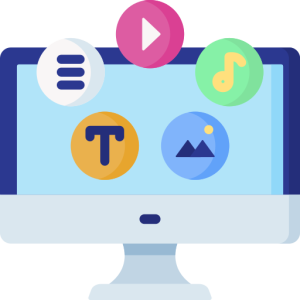Software

In the context of e-learning development, software plays a crucial role in enabling and supporting the different stages of a development pipeline. Here’s a breakdown of how software can be used to facilitate each stage:
- Content Creation: Authoring tools and learning management systems provide a platform for creating and organizing e-learning content.
- Multimedia Integration: Software applications for multimedia editing, such as Adobe Creative Cloud suite (including Photoshop and Inkscape), allow developers to create and edit images, graphics, audio, and video elements. These tools help enhance the visual appeal and engagement of e-learning materials.
- Assessment Design: Assessment authoring tools provide a means to create quizzes, tests, and other assessment activities. These tools enable developers to design various question types, set scoring parameters, and generate reports for tracking learner progress and performance.
- Learner Interaction Design: Software platforms such as your LMS and other frameworks like H5P provide the infrastructure for hosting and delivering e-learning modules. They offer features for learner enrollment, progress tracking, discussion forums, and collaboration tools.
- Deployment: Software tools for content packaging and delivery, such as SCORM (Sharable Content Object Reference Model) or xAPI (Experience API), facilitate the deployment of e-learning modules to various learning management systems or online platforms. These tools ensure compatibility and interoperability of e-learning content across different environments.
By leveraging these software tools and platforms, e-learning developers can streamline their workflow, enhance collaboration, and efficiently create, manage, and deliver high-quality e-learning materials throughout the development pipeline.
Open Source?
eLearning software has been a space dominated by commercial entities. However, open source communities have made up ground in recent years. Open source refers to software that is freely available for use, modification, and distribution, with its source code openly accessible. Its advantages include fostering collaboration and innovation among a community of developers, providing flexibility and customization options, and promoting transparency and security through peer review of the source code.
Open source e-learning software refers to e-learning platforms or tools that are built on open source principles, allowing users to freely access, modify, and distribute the software. This approach empowers educators and instructional designers to customize and adapt the software to their specific needs, fostering innovation, flexibility, and cost-effectiveness in creating engaging and interactive e-learning experiences. Here are some examples:

